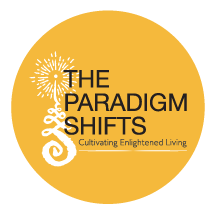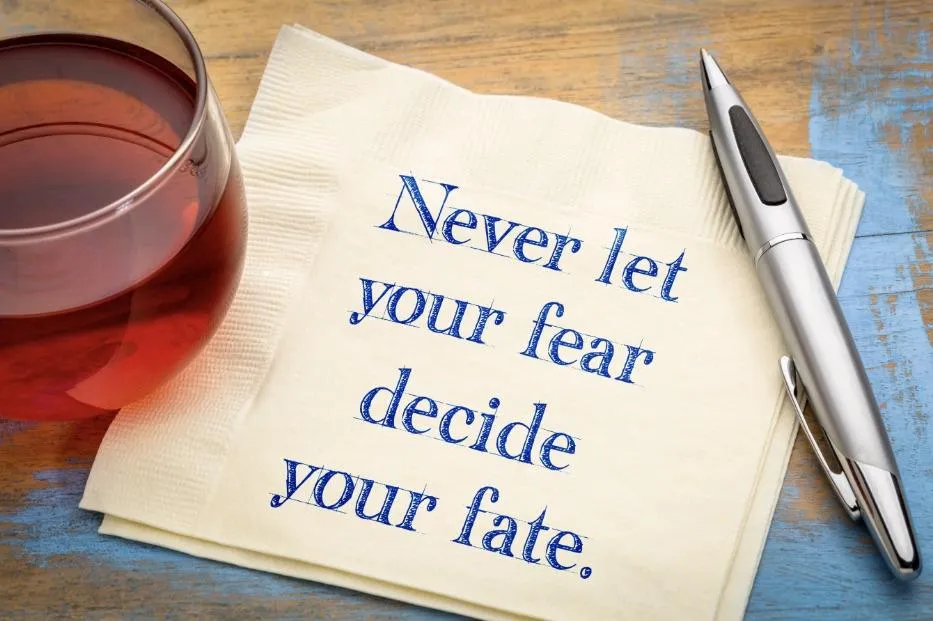We all want to show up as a calm, grounded presence—someone others feel safe turning to in moments of uncertainty—when they don’t how to be, or how to do what’s theirs to do. Whether we’re coaches, friends, or simply holding space in everyday conversations, we want the people around us to feel truly seen and supported—especially when fear or anxiety takes hold.
One coach recently put words to this very dilemma in a way that speaks to so many of us who sit with people afraid to choose differently.
Coaching Clients Who Spiral in Fear and Anxiety
Jennifer asks:
“A client of mine makes most of her decisions from a place of fear and anxiety. It’s difficult to guide her to look at her circumstances from outside her feelings because she’s stuck in this spiral and all she sees is the most negative viewpoint. She says, ‘I can’t’ for about a hundred reasons. I want to be a better coach—how can I see this differently?”
Thank you, Jennifer, for articulating this universal coaching dilemma. This experience is not unique—many of us coach people who are caught in the grip of anxiety and fear-based decision-making. In fact, it’s foundational to every choice-making moment each of us faces. Sometimes, it’s more intensely in the way. Here’s a perspective—one of many in the world:
Acknowledge the Pattern
First, it’s important for us to recognize that our client’s negative mindset is probably a pattern that has been with them for a long time. It’s not a character flaw. There’s a statistic that 80% of the average person’s thoughts are negative in nature, and that means a lot of fear! This is a collective human condition—not just your client’s issue. We are steeped in a fear-based paradigm. We are trained to be afraid of fear. Knowing this gives us perspective and a place to begin.
So, when a client is saying, “I can’t” again and again, what they’re really showing us is the habitual groove their mind has been trained to follow. What you’re witnessing is not just resistance—it’s the sum of years of unconscious patterning that creates a default state of contraction. This isn’t much different from our computer’s own default settings.
As a coach, our job is to be a witness—a thinking partner for our clients, seeing and hearing them in a way that allows them to see themselves differently. When we see them with the potential to change their negative thinking patterns, they too can begin to know this for themselves. Hooray!!!
Shifting from a Fear-Based Paradigm to a Potential-Based Paradigm
What we’re really talking about here is a paradigm shift. Most people are living and making decisions from a paradigm of fear, scarcity, and limitation. Transformational coaching operates from a very different premise: the paradigm of 100% potentiality.
This requires something powerful from you, Jennifer—it requires that you live and coach from that paradigm of potentiality yourself. Only then can you consistently invite your clients into this experience. If you’re holding the resonance of fear, you will potentially let your clients off the hook, meaning you may not sense or be aware of their fear-based point of view. But if you’re grounded in your own sense of possibility and not in fear, you’ll address their position with empathy and compassion. They’ll feel safe. They’ll feel seen, heard and gotten. They’ll allow the possibility of life without fear to be, well, possible. And, they will be grateful for being witnessed in who they are becoming!!!
Bring in the Magic Wand
One of my favorite coaching tools is my magic wand. Yes—literally. I keep one nearby. Why? Because it signals a shift from the ordinary fear-based paradigm to the paradigm of extraordinary, from fear to possibility. Wahoo!
When a client is caught in fear, I ask them: “If I had a magic wand, and you knew it worked it’s magic, every time, what would you say you want?”
Something changes in that moment. The client’s eyes soften. They pause. And often, for the first time ever, they may let themselves speak from the heart instead of the panic. A sliver of light breaks through the fog.
You don’t even need a real wand—just the question itself acts as the wand. It momentarily bypasses the fear-based paradigm and allows access to a different level of knowing. Trust me. They know this place of KNOWING! And so do you!!!
Be the Change
Here’s a Gandhi story: A mother brought her son to Gandhi and asked him to help the boy stop eating sugar. Gandhi said, “Come back in three weeks.” When they returned, Gandhi spoke to the boy, and the boy gave up sugar. The mother asked Gandhi, “Why did we have to wait three weeks?” Gandhi replied, “Because I had to stop eating sugar first.”
This story is a cornerstone of transformational coaching. If we want to help our clients shift out of fear, we must do that work ourselves. That doesn’t mean perfection—it means awareness. It means we know the terrain. We know what it takes to shift from the fear of letting go of what we believe, to releasing the grasp of fear for something else—free choice!
Holding the Stake
When working with a client like Jennifer’s, who is spiraling in fear, I envision myself planting a stake in the ground. That stake represents the truth that I hold for her: You are not your fear. You are not your anxiety. You are so much more!
That stake helps anchor both of us. It reminds me to speak to the part of the client that already knows this. This part knows joy. It recognizes truth. Even if they don’t believe me in the moment, I trust that some part of them does.
I often say to clients, “My job is to let you know that I know that you know.” If nothing else, it reminds me to know myself, over and over again, outside of the paradigm of fear. This allows my clients the freedom to explore who they are in all their potentiality in the paradigm of all possibility! This is Big Work!!!
Reframe, Don’t Fix
Many coaches feel pressure to fix their clients. But coaching isn’t about fixing. It’s about noticing.
I had a client—let’s call her Maureen—who would get into a frenetic, anxious state every time she had to pack for a trip. It was her default. But when we explored other parts of her life, she could name times she handled things calmly and effectively. She had the capacity—she just didn’t know how to access it in that specific situation.
So I asked her: “How do you choose to choose what you choose?”
That’s a powerful coaching question. It stops the spiral. It invites reflection rather than reaction.
Track the Pattern
With clients who operate from fear, it’s powerful to help them track the pattern:
- When does it show up? What thoughts trigger that fear or anxiousness?
- When are you not in fear? When do you operate with ease and grace?
- What allows you to feel safe enough to choose differently?
Again, it’s not about changing the pattern overnight. This is not a quick-fix model. This is deep transformation. Think caterpillar-to-butterfly—it happens over time!
Empower Through Presence
Ultimately, Jennifer, you don’t need to pull your client out of the spiral. You just need to stand outside the spiral yourself. From that place, ask honest, curious questions. Reflect all the positivity, the courage, the strength that you see. Celebrate for your client small moments of awareness. And most importantly, trust the process.
Your role is not to drag your client out of the dark, but to light a lantern and wait at the edge of the cave, singing a song of what’s possible.
You’ve got this.
And, if it seems your client needs something more, it’s always good to consider referring them to a therapist or medical practitioner. We don’t have all the answers. And, it’s good to know when it’s right for our clients to call in someone who may have more answers, or experience than we do!
Keep growing your capacity to lean into your own limitations. This will support and empower you to empower those you serve to live and thrive in their fullest potential!
Rosie
Use this link to share with me what challenges you about any aspect of Becoming Worth Talking With. I’ll provide my perspective and experience to support and empower you to support and empower those you serve.

